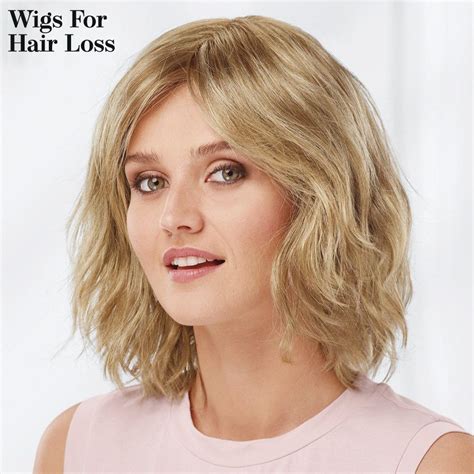Introduction
Hair loss is a common condition that can affect people of all ages, genders, and races. It can be caused by a variety of factors, including medical conditions, genetics, and stress. While there are many treatments for hair loss, wigs offer a convenient and effective way to conceal baldness or thinning hair.

Types of Wigs
There are many different types of wigs available, each with its own unique features and benefits. Some of the most common types of wigs include:
- Synthetic wigs: These wigs are made from synthetic fibers, such as nylon or polyester. They are relatively inexpensive and come in a wide variety of styles and colors.
- Human hair wigs: These wigs are made from real human hair. They are more expensive than synthetic wigs, but they offer a more natural look and feel.
- Lace wigs: These wigs are made with a thin, flesh-colored lace that is attached to the scalp. This gives them a very natural appearance, as the lace mimics the look of a real scalp.
- Monofilament wigs: These wigs are made with a thin, transparent material that is attached to the scalp. This gives them a very comfortable and breathable feel.
Choosing the Right Wig
When choosing a wig, there are a few things to keep in mind:
- Your face shape: The shape of your face will determine the style of wig that will look best on you. For example, if you have a round face, you might want to choose a wig with long, flowing hair that will help to elongate your face.
- Your hair color and texture: The color and texture of your wig should be similar to your own natural hair. This will help to create a seamless and natural look.
- Your budget: Wigs can range in price from a few hundred dollars to several thousand dollars. It’s important to set a budget before you start shopping so that you don’t overspend.
Caring for Your Wig
Once you have chosen a wig, it’s important to take proper care of it to ensure that it lasts for as long as possible. Here are a few tips for wig care:
- Wash your wig regularly: You should wash your wig every 7-10 days, or more often if you wear it every day. To wash your wig, use a mild shampoo and conditioner. Be sure to rinse the wig thoroughly after washing.
- Detangle your wig: Be sure to detangle your wig regularly to remove any knots or tangles. To detangle your wig, use a wide-tooth comb or a wig brush.
- Style your wig: You can style your wig using heat tools, such as a blow dryer or a curling iron. However, be sure to use a low heat setting to avoid damaging your wig.
- Store your wig properly: When you’re not wearing your wig, be sure to store it properly to protect it from dust and damage. You can store your wig in a wig box or on a wig stand.
Conclusion
Wigs offer a convenient and effective way to conceal baldness or thinning hair. There are many different types of wigs available, so you’re sure to find one that meets your needs. Be sure to choose a wig that complements your face shape, hair color, and texture. And be sure to take proper care of your wig to ensure that it lasts for as long as possible.
